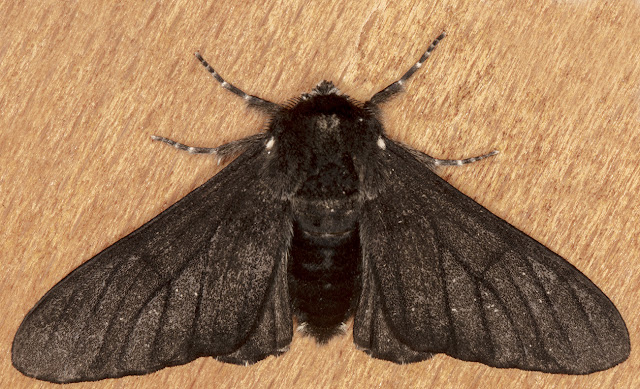 |
| Alder Kitten, Furcula bicuspis. Luxford Lane, Crowborough, 28 May 2017. |
I have moved house! I now live in Crowborough, East Sussex. It's more countrified than Hayes, but the size of the local community is similar.
So, I started moth trapping immediately. These are some of the lovely things I got on my first night. First, an Alder Kitten, one of the moths you can point to if people think moths are dowdy. It lives in wooded areas in the south of England, and the larvae feed on Birch as well as Alder. I am not as close to the woods here as I was in Hayes, but they are only a mile away and that must be within the flight capacity of this Kitten.
 |
| Notocelia cynosbatella. Luxford Lane, Crowborough, 28 May 2017. |
This Notocelia cynosbatella is a much smaller moth, one of a very large family, the Tortricidae. Some of these are hard to tell apart, but the orange whiskers make this one very easy to identify.
It's common throughout Britain, and the larvae feed on roses.
 |
| Peppered Moth, Biston betularia forma carbonaria. Luxford Lane, Crowborough, 28 May 2017. |
I have to include this very smart black moth. It's the dark form of the Peppered Moth, much quoted as an example of industrial melanism, that is, darker forms surviving better in soot-coloured parts of the country. The common explanation is that darker forms are better camouflaged from predators in industrialised areas, but no-one has yet provided direct proof of this attractive theory. Rather than tell the whole story here, may I point you to the
Wikipedia article on industrial melanism, which gives a fair precis.
I see lots of the typical peppered form, but hardly any of these pretty creatures.



"I have moved house! I now live in Crowborough, East Sussex."
ReplyDeleteThat is a shame I liked a blog of local wildlife, I wish I found it years ago.
Good luck and keep blogging on your new wildlife.
It'll still be local, just a different locality!
ReplyDeleteTrue, by the way is there a moth trapping community in Hayes?
ReplyDelete